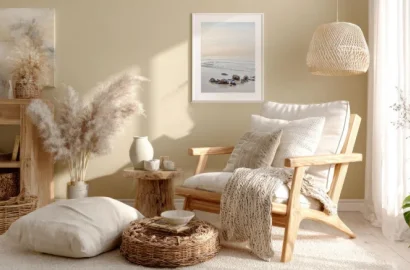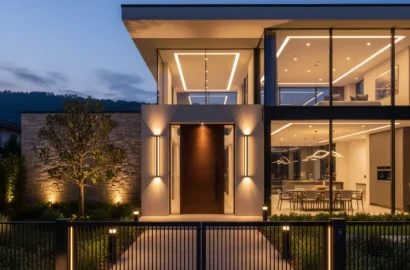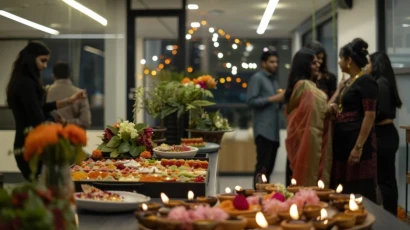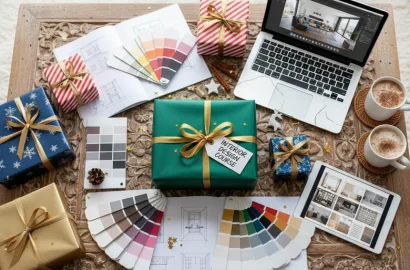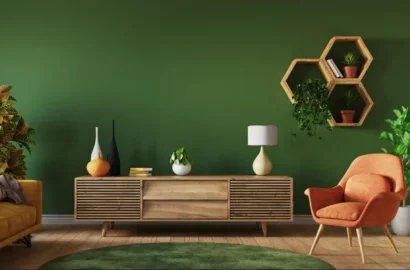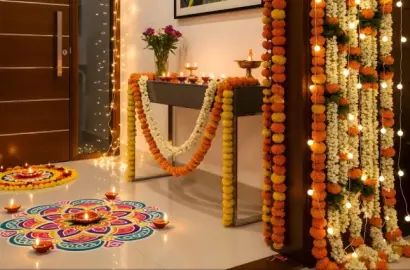Learn everything you need to know about an interior stylist, including its role, how it differs from an interior designer, the career opportunities, and actionable tips to get started.
Interior styling is a creative art form that deals with styling homes, workspaces, and events, ensuring every corner of your room looks desirable, comfortable, and visually compelling. It essentially involves sourcing and aesthetically arranging design elements and products with a lot of attention. Regardless of the brief or scope of work, a skilled interior stylist has the ability to make any space feel authentic and unique.
Today, interior styling tips are by and large shared and appreciated on social media platforms like Instagram and Pinterest, encouraging people to take action towards creating chic and personalized spaces. In this comprehensive guide, we will walk you through the role of an interior stylist, highlight areas of specialization, discuss career opportunities, and provide guidance on how to get started with this upcoming profession.
Here’s a clickable list of everything that we’ll be covering in this article!
- What is an interior stylist?
- What is the role of an interior stylist?
- Differences between an interior stylist and an interior designer
- What are the areas of specialization for an interior stylist?
- Career opportunities and growth in interior styling
- How to become an interior stylist
- In conclusion
What is an Interior Stylist?
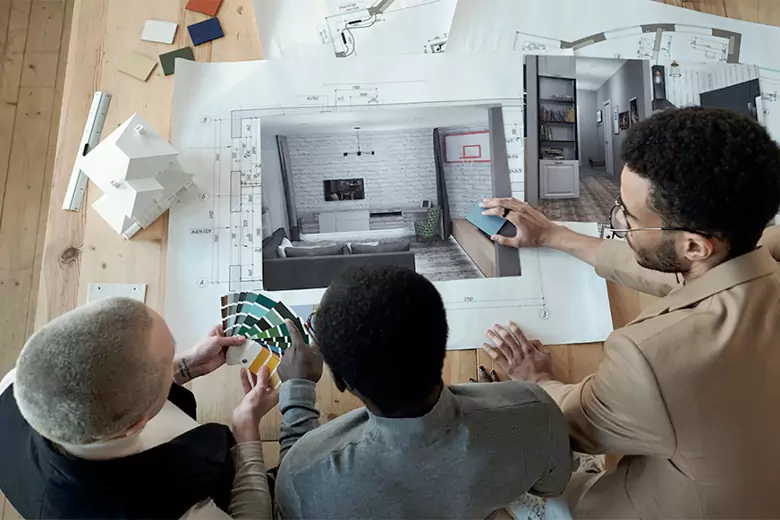
Image Courtesy: BlueEntCAD
An interior stylist is a design professional whose responsibility embodies the aesthetic aspects of interior spaces. Unlike interior designers, who may work on structural changes or spatial planning, interior stylists concentrate on curating and placing decor elements such as furniture, accessories, lighting, and art to create a cohesive and appealing look.
Interior stylists are often hired for projects like home makeovers, commercial or editorial shoots, product styling, and creating stunning environments for events. Their primary goal is to create an identity for a space, making it emotionally engaging and visually pleasurable, often with a keen eye for current trends and timeless aesthetics.
What is the role of an interior stylist?
Interior stylists specialize in preparing rooms and interiors for photoshoots, often working on editorial or commercial projects. Their expertise lies in highlighting the best features, textures, and conversation points of a space, ensuring every shot is perfect. Stylists plan every detail of the composition, from furniture placement to the overall flow of the space, which requires understanding the brief, brainstorming ideas, creating mood boards, sourcing props, managing logistics, and securing approvals.
The scope of work involves considering colors, textures, layers, and angles that create a desired mood. Interior stylists aim to take a variety of shots, from wide-angle views to close-up details, to spark interest and draw viewers’ attention. However, the art of capturing the best features of a space is a learned skill that requires time and practice. Aspiring stylists begin their careers by assisting interior designers or photographers for a few years, honing their skills, and then taking on projects independently.
Their responsibilities typically include:
- Theme development: Creating a consistent style or theme that aligns with the client’s vision.
- Sourcing materials: Selecting and sourcing decorative items, textiles, and accessories to fit the project’s aesthetic.
- Collaborating with clients and vendors: Communicating with clients to understand their preferences and coordinating with suppliers to obtain high-quality materials.
- Photography and staging: Preparing spaces for photoshoots, events, or real estate showings.

Major differences between an Interior Stylist and an Interior Designer
The terms interior stylist and interior designer are often interchangeably used and can get quite confusing at times. In comparison, an interior designer may occasionally do the job of an interior stylist, but the opposite may be debatable. Both are capable of providing interior design tips, but their roles are distinctly different.
Read on to understand the points of difference between these roles.
- While interior designers often have extended timelines to finalize plans, consult with clients, and source items, interior stylists typically operate under much tighter deadlines. Their schedules are frequently dictated by publication timelines or the availability of specific locations or properties. Meeting these fast-paced demands is a regular part of the job, where shoots are scheduled with as little as one week’s notice. Additionally, stylists are frequently responsible for restoring the space to its original condition once a shoot is completed.
- Both professionals offer distinct services at different stages of an interior design project. Styling usually comes into the picture towards the end of a project, when an interior designer has almost completed the job. Interior stylists focus more on the final touches, ensuring the addition or removal of a few items to make the space look put together. Sometimes, interior stylists don’t work with fully furnished rooms but instead, create curated scenes to present products in an attractive way for publications. While interior designers and stylists strive for a flawless end result, interior design typically involves significant transformations and structural changes before reaching the final stages of styling.
- Another major difference is the emphasis on product or brand placement in styling, which is not always a priority for interior designers. Stylists need to strategically position a statement piece or product in their shots to create a focal point, whether it’s an unconventional piece of furniture or a carefully chosen accessory, to maximize its appeal and desirability, aligning with the project’s creative vision.
What are the areas of specialization for an interior stylist?
Interior stylists can specialize in various niches based on their interests, catering to diverse projects and clients. Each of these specializations offers unique challenges and rewards, allowing stylists to choose paths that best match their skills and career aspirations. Some common areas of specialization include:
1. Residential Styling
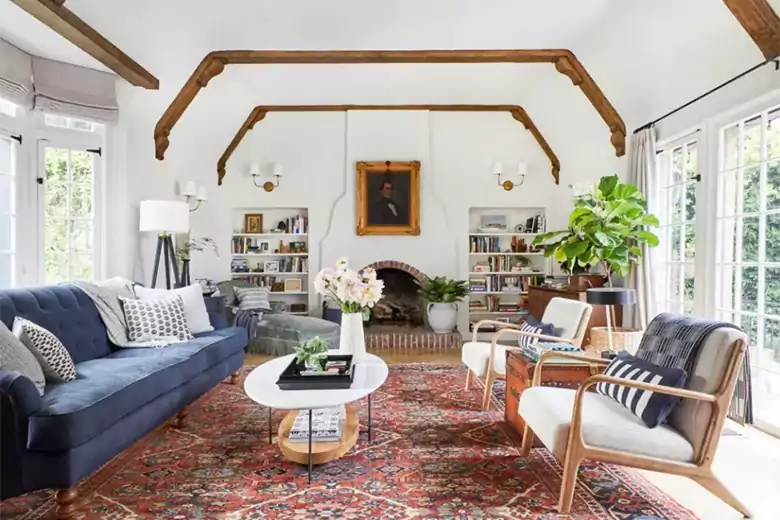
Image Courtesy: Decorilla
Residential stylists partner with individual homeowners to redefine their living spaces with personalized themes and curated decor. They work closely with clients to understand the latter’s lifestyles, preferences, and budgets and then curate a customized residential interior design scheme that reflects their personality and matches their functional needs.
2. Commercial Styling
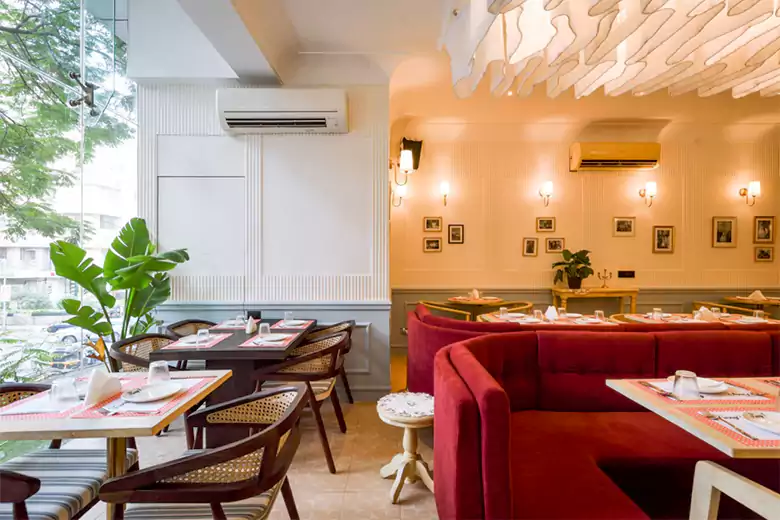
Image Courtesy: Architectural Digest
Commercial stylists specialize in designing visually appealing and functional spaces for businesses. They work on projects such as restaurants, hotels, retail stores, and offices, keeping in mind the company's needs, vision, and brand objectives. In addition to aesthetics, they focus on optimizing space utilization, ensuring smooth traffic flow, and integrating elements that improve brand identity and customer experiences. They may also incorporate design strategies to encourage specific behaviors, such as boosting sales in retail environments or encouraging collaboration in office spaces.
3. Editorial Styling
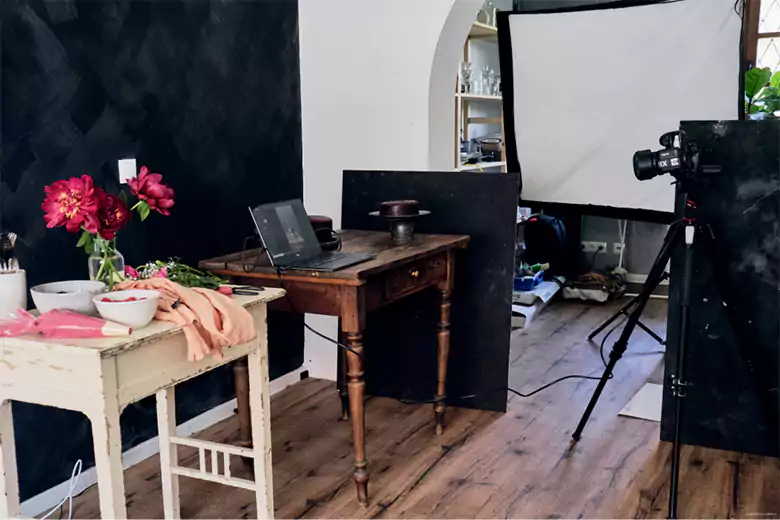
Image Courtesy: Capture One
Editorial stylists collaborate closely with photographers, magazines, and design publications to create setups for advertising campaigns, social media content, and visually stimulating images for editorial features. Their skills include arranging and styling spaces for photoshoots and ensuring that the final photos convey the intended meaning.
3. Event Styling

Image Courtesy: Classy Events
Event stylists usually work for various occasions like exhibitions, weddings, corporate events, and private parties. Their role involves designing and executing exuberant environments tailored to one-time occasions. This field requires stylists to think on their feet and deliver exceptional results under tight timelines.
4. Product Styling
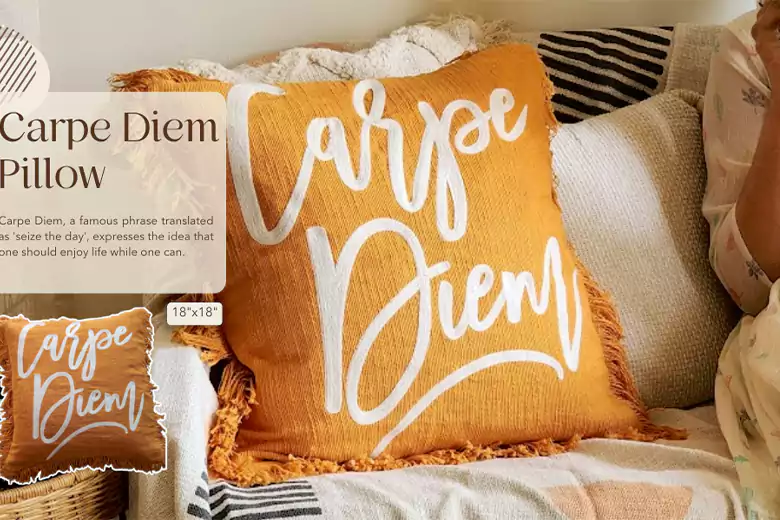
Image Courtesy: Hyppy
Product stylists collaborate with brands to create stunning presentations of products for photoshoots, advertisements, and marketing campaigns. Their primary goal is to showcase items in a way that attracts customers, drives engagement, and leaves a lasting impression, making it a vital aspect of branding and marketing strategies. The process includes understanding the brand and audience, creating an aesthetic narrative, highlighting important features, setting the scene, and collaborating with photographers and art directors.
5. Retail Styling

Image Courtesy: The Architect’s Dairy
Retail stylists focus on designing visually striking and engaging retail environments that attract customers and encourage sales. They use their expertise in visual merchandising and consumer behavior to create displays that not only showcase products effectively but also enhance the overall shopping experience. They are also responsible for integrating trends and shaping how customers interact with a brand's space.
Career opportunities and growth in Interior Styling
Now that we have covered the niches within interior styling, let’s move on to the exciting career prospects and growth opportunities that this industry has to offer.
1. Working freelance or joining a design studio
- Freelance Work: Freelancing offers flexibility and creative freedom. You can build your brand, work on diverse projects, and establish direct client relationships. Freelancers have the advantage of choosing their niche and clients, which can lead to higher job satisfaction. However, it requires self-discipline and business acumen to succeed.
- Design Studios: Joining a design studio provides stability, collaboration opportunities, and a steady flow of projects. It’s an excellent choice for gaining experience and learning from industry experts. Studio work often involves exposure to high-profile projects and access to established networks.
2. Opportunities in content creation
Content creation provides numerous opportunities for interior stylists to showcase their expertise and establish their personal brand. By leveraging various social media platforms, you can build a career in the online space by:
- Showcasing your work: Use platforms like Instagram, Pinterest, and TikTok to display your projects, styling tips, before/after transformations, mood boards, and behind-the-scenes. You can also share room layouts, makeovers, color schemes, and curated collections of design inspiration.
- Collaborating with brands: Partner with decor brands for sponsored content and collaborations.
- Building an audience: Create educational content for aspiring stylists or homeowners, establishing yourself as a thought leader in the industry.
- Monetizing your expertise: Offer online courses, ebooks, or consultation services to generate passive income streams.
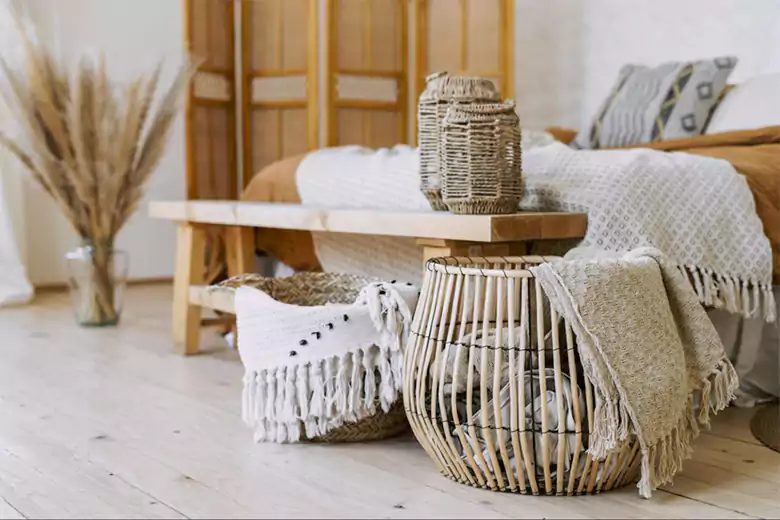
How to become an Interior Design Stylist?
Pursuing a career in interior styling requires a combination of passion, skill development, and networking. Here’s a step-by-step guide to becoming an interior stylist.
1. Understand the Industry
Before getting started, take the time to thoroughly research the field of interior styling. Gain a clear understanding of its demands, current trends, and the essential skills needed to excel. Follow industry leaders, attend workshops, and engage with content that expands your knowledge.
2. Gain relevant education
While formal education isn’t always mandatory, enrolling in an interior styling course can provide a strong foundation. Look for degree or certification programs that cover:
- Styling principles and techniques
- Color theory and material selection
- Photography and visual composition
- Industry-relevant tools like Photoshop and SketchUp
3. Build your skillset
- Creativity: Develop an eye for detail and a knack for visual storytelling.
- Trend Awareness: Stay updated with design trends, new materials, and emerging aesthetics.
- Communication: Hone your ability to understand client needs and articulate your ideas effectively.
- Technical Skills: Learn how to use design software and digital platforms.
4. Gain experience
Start with small projects, such as styling your own home or helping friends style their spaces. Document your work to create a portfolio that showcases your versatility and interest.
5. Build a portfolio
An impressive portfolio is essential to attract clients and collaborators. Include:
- High-quality images of your projects.
- Detailed descriptions of your role and contributions.
- Testimonials from clients.
We also recommend you check out this project by AND Learner, Aakriti Sharma to get inspiration for your portfolio.
6. Network
Building a valuable professional network is essential in interior styling. Attend industry events, collaborate with photographers and designers, and actively engage on social media platforms. Use Instagram, Pinterest, and LinkedIn to showcase your work and connect with potential clients.
7. Stay updated and upskill
To remain relevant, keep learning through online courses, workshops, and industry events. Experiment with new techniques and stay up-to-date with the latest trends.
8. Consider certification
Obtaining certification from a recognized institution can boost your credibility and help you stand out. Look for esteemed organizations that offer specialized certifications in interior styling.
9. Build your brand
Develop a unique style and aesthetic that sets you apart from your peers. Create a website, engage with your audience on social media, and establish a consistent brand identity.
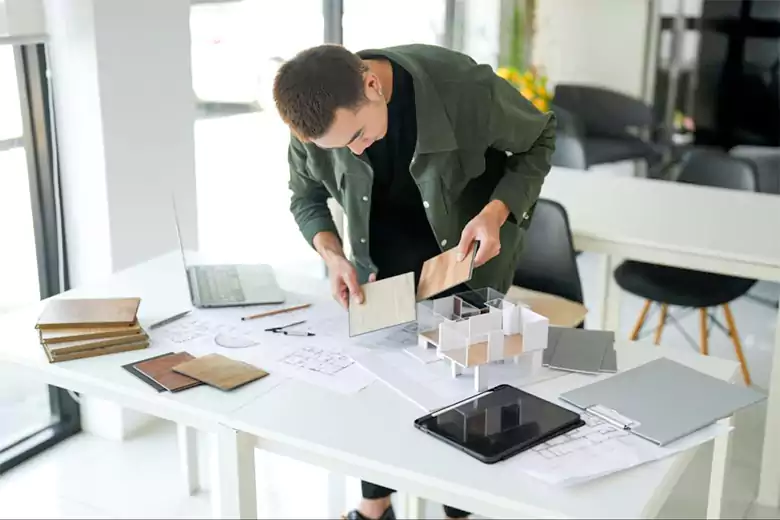
10. Explore opportunities
Look for internships, freelance projects, or full-time roles with design firms. Expand your reach by collaborating with influencers, photographers, and brands in the lifestyle space.
In conclusion
We hope that this guide has helped you understand the nitty-gritty of interior styling and its scope as a career choice. Whether you want to style homes or commercial spaces or be a part of editorial photoshoots, know that there is something for everyone. If you have a knack for styling spaces, interior styling can be an exciting and rewarding option to consider.
If you’re intrigued by interior styling or the interior design field in general and would like to enroll in a design course, check out AND’s Interior Design Courses, taught by industry experts. These courses also come with dedicated placement support and a job guarantee.
Next Steps
In case you are interested in learning more about interior design and its practical application, head over to our blog for more articles. Also, consider going through the following resources.
1. Interior Design For Small Living Rooms: Complete Guide (With 25 Ideas)
2.A Comprehensive Guide to Modern Interior Design (With Ideas)
3. 33 Luxury Interior Design Tips to Revamp Your Home in 2024
In case you need further assistance, here are some resources to consider:
- Watch this session by Snehanshu Mukherjee, Founding Partner at T.E.A.M and Mansi Almadi, an Interior Designer at Studio Lotus
- Talk to a course advisor to discuss how you can transform your career with one of our courses.
- Check out our Interior Design courses - all courses are taught through live, interactive classes by industry experts.
- Take advantage of our scholarship and funding options to overcome any financial hurdle on the path of your career transformation.
Note: All information and/or data from external sources is believed to be accurate as of the date of publication.




